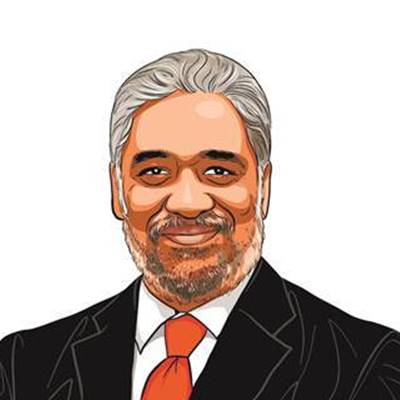Opinion In the shadow of the East
A changing Asia will be very much on the minds of Obama and Dr Singh.
As preparations for US President Barack Obamas visit to India in early November gather momentum,Asia and its rapidly evolving geopolitics are emerging at the very top of the bilateral agenda.
Amidst the rise of China,Beijings new tensions with Japan and the Southeast Asian nations and the search for stronger regional institutions,both Washington and Delhi are redoing their sums on Asian security.
As the conventional wisdom on Asias peaceful rise begins to unravel,India and the United States are under some pressure to raise their game in the region. That in turn demands greater cooperation between Delhi and Washington in devising a new Asian order.
In a series of recent conversations with this writer in Washington,senior officials of the Obama administration welcomed Indias expanding profile in East Asia and extended strong support to Delhis Look East policy.
Under-Secretary of State William Burns said the US places special emphasis on the role India plays in Asia in ensuring order,balance and security. Contrary to the earlier fears in Delhi that Obama might look at India through the narrow prism of South Asia,his administration sees cooperation with India as important for the political future of East Asia.
I think it is fair to say that the US does not characterise the engagement with India as confined to either South Asia or East Asia, Assistant Secretary of State for East Asia Kurt Campbell told this writer. Our discussion with India now covers the full range of issues relating to South Asia,Southeast Asia and Northeast Asia,and global issues as well, he underscored.
India too believes that the distinctions between East and South Asia can no longer be sustained. We have global interests,the Chinese have global interests. All the major powers are not only interdependent on each other,but also are dealing with each other across a whole range of issues,none of which recognises some artificial geographical construct like South Asia or East Asia, National Security Adviser Shivshankar Menon told an audience in Washington last week.
For Delhi,the question can no longer be how to stop China from playing a larger role in the subcontinent,but how India can expand its own footprint in East Asia.
The Obama administration would like to see India step up the pace and scope of its engagement in Asia. We fully support Indias Look East strategy. We recognise that all nations in Asia want closer partnerships with India, Campbell said. We would like to see Indias role in Asia manifest itself in terms that go beyond declarations of intent.
While China looms large over the new geopolitics of Asia,Washington does not see its engagement with the region in terms of a zero-sum game. The American emphasis,instead,is on deepening old alliances,building new partnerships,engaging China,and creating an enduring Asian security architecture. Similarly,India too wants to strengthen its cooperation with China while improving its own position in the Asian order.
Multilateralism in Asia during the 90s has been essentially trans-Pacific, Campbell said. During the last decade,it has become centred on pan-Asian integration. In the new phase,India,along with the US,must have a much larger role in shaping the Asian economic institutions and its security architecture.
ASEANs recent invitation to the US and Russia to join the East Asia Summit,the Obama administration believes,will create the core of a new map in Asia that might frame the international relations of the region in the future. The East Asia Summit currently includes the 10 member states of the ASEAN and six others China,Japan,South Korea,India,Australia and New Zealand.
For its part,India is welcoming the US entry into the East Asia Summit and is eager to engage it in the Asia Pacific. According to Menon,Traditionally,India and the US have viewed each other across the Eurasian landmass and the Atlantic Ocean. We get a different perspective if we look across the Pacific,across a space that we share and that is vital to the security and prosperity of our two countries.
The Obama administration has already had two rounds of consultation with India on East Asian security issues at the level of senior officials. Both Washington and Delhi are pleased with the tenor and substance of their dialogue on East Asia and hope to institutionalise it.
As they deepen their regional security dialogue,Prime Minister Manmohan Singh and Obama have a few weeks of intensive diplomatic engagement ahead of them in Asia.
After spending nearly three days in India in early November,Obama will head to Indonesia,where he spent his childhood. Indonesian President Susilo Yudhoyono is expected to be the chief guest at Indias Republic Day celebrations in January.
After Indonesia,Obama will head to South Korea and Japan,the long-standing US allies in Asia. In Seoul he will join the leaders of the G-20,who are gathering for the first time in Asia since the forum was created in 2008 to manage the global financial crisis.
Dr Singh will also travel to the G-20 meeting in Seoul in November and will have a chance to meet Obama. In October,he will participate in the East Asia Summit in Hanoi.
In what is expected to be a consequential bilateral visit to Japan in October,the two sides are likely to announce bilateral measures for trade liberalisation and reaffirm their commitment to deepen the strategic partnership.
A changing Asia,then,will be very much on the minds of President Obama and Prime Minister Singh when they meet in Delhi in a few weeks from now.
raja.mohan@expressindia.com





